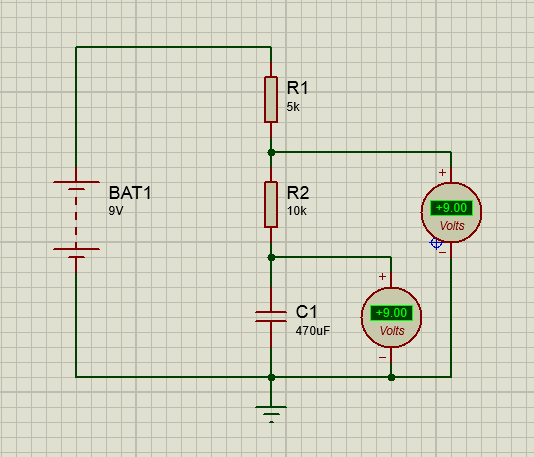I’m going to try to combine the other two answers and bring it down in level just a notch.
All of this, as Innacio noted, are based on a simulation of ideal components. In real life, the results are slightly different.
First, because the voltage is DC, the capacitor will fully charge and effectively become an open circuit. Just pretend it isn’t there. The volt meters are infinite impedance and so draw zero current.
Now look at Ohm’s law: voltage = current x resistance. Because the current draw is zero, the voltage drop over each resistor is also zero. Thus, you see 9 volts at both nodes.
In real life, this will be different, though maybe not enough to see. The cap will have leakage current, effectively becoming another resistor. However, the effective resistance may be large enough to dwarf the actual resistors. Also, the volt meters will draw some current, but again, it may be so small that it has little effect.
 I have been trying to figure this out, kinda a amateur question actually! Looking at the above circuit diagram am wondering why there is no voltage drop across the resistor R1? A part of voltage should be dropped out by the R1 isn't it?
I have been trying to figure this out, kinda a amateur question actually! Looking at the above circuit diagram am wondering why there is no voltage drop across the resistor R1? A part of voltage should be dropped out by the R1 isn't it? 